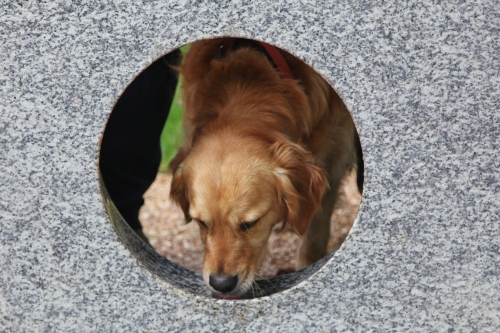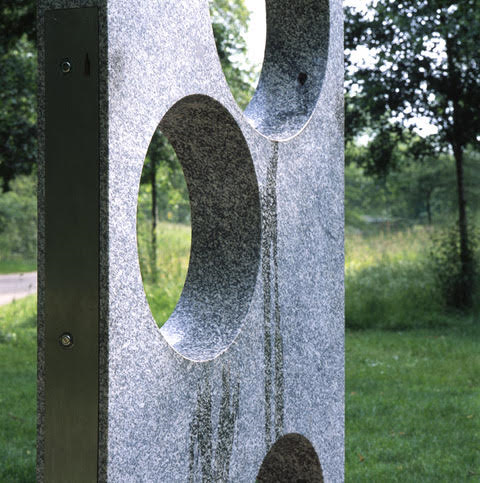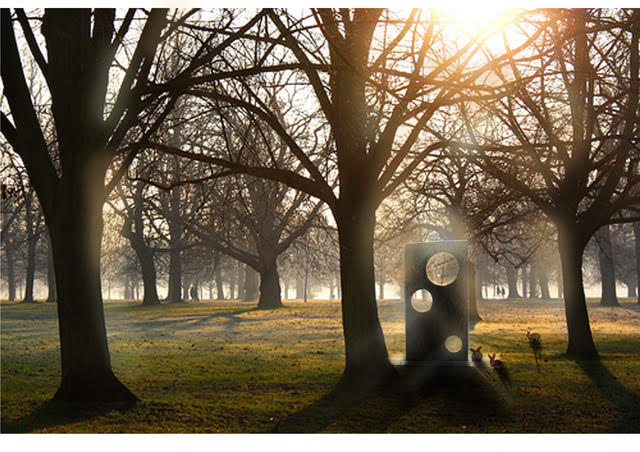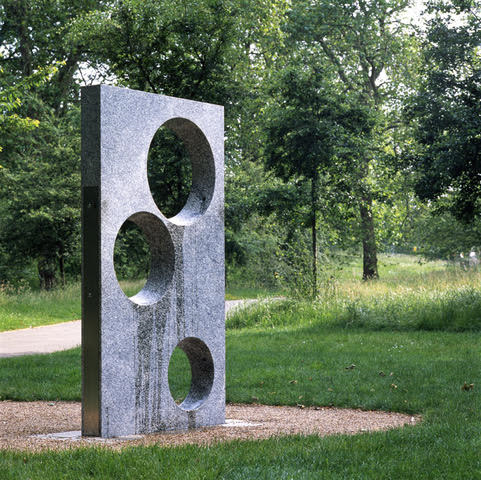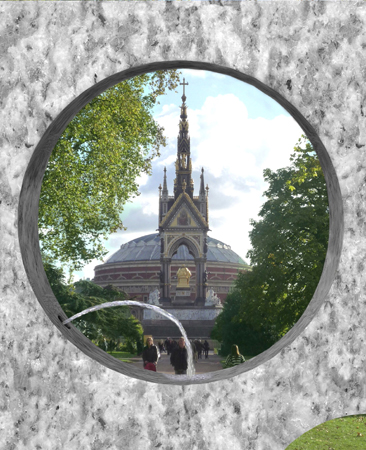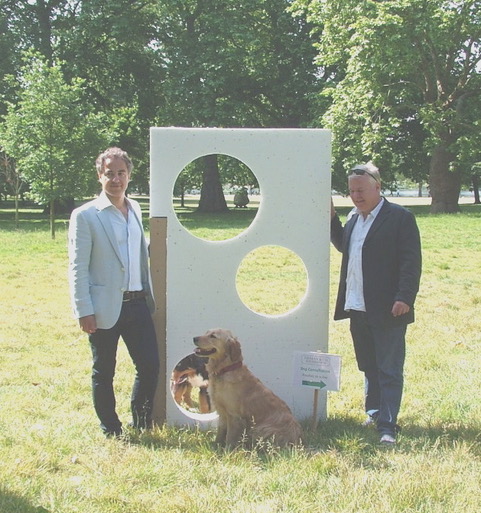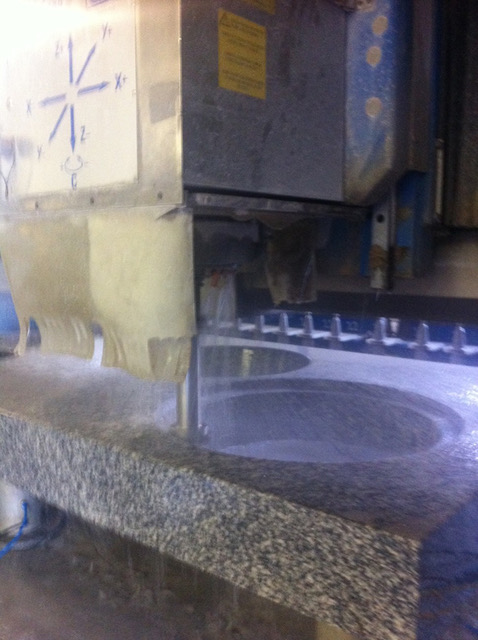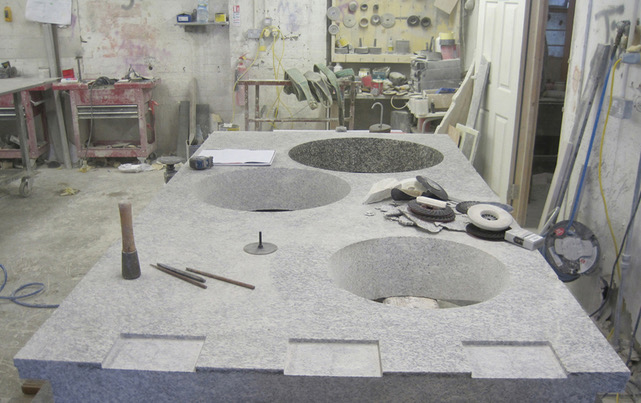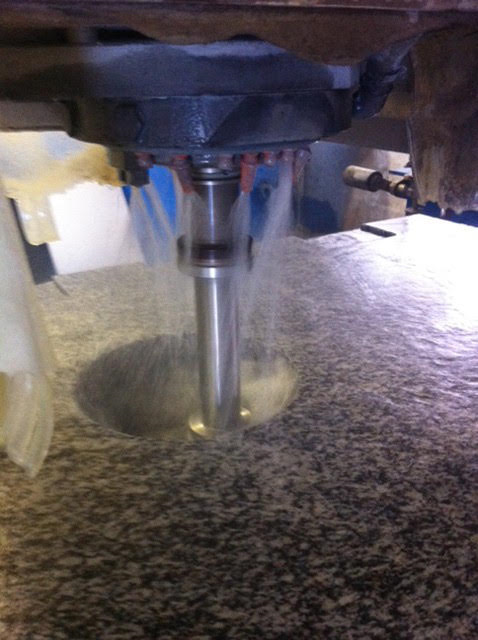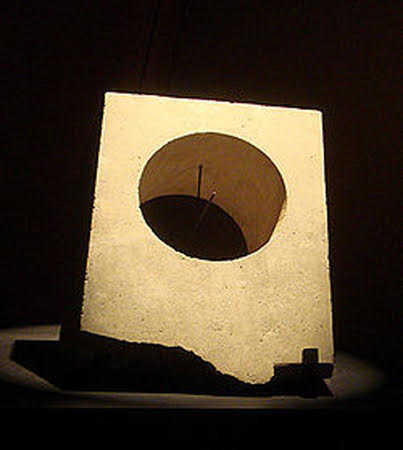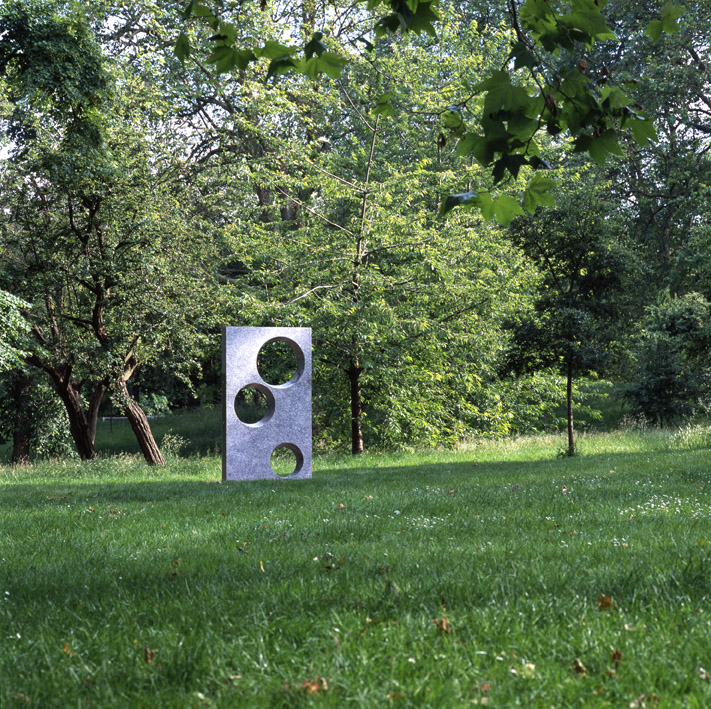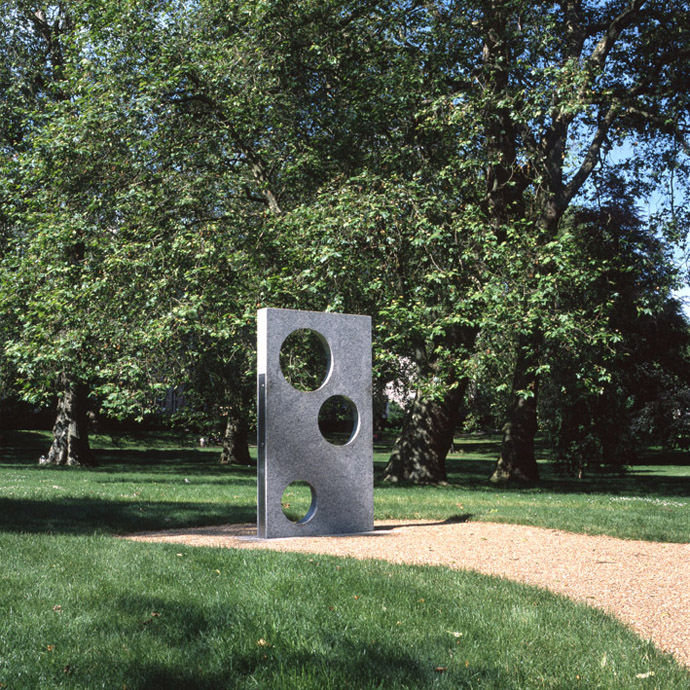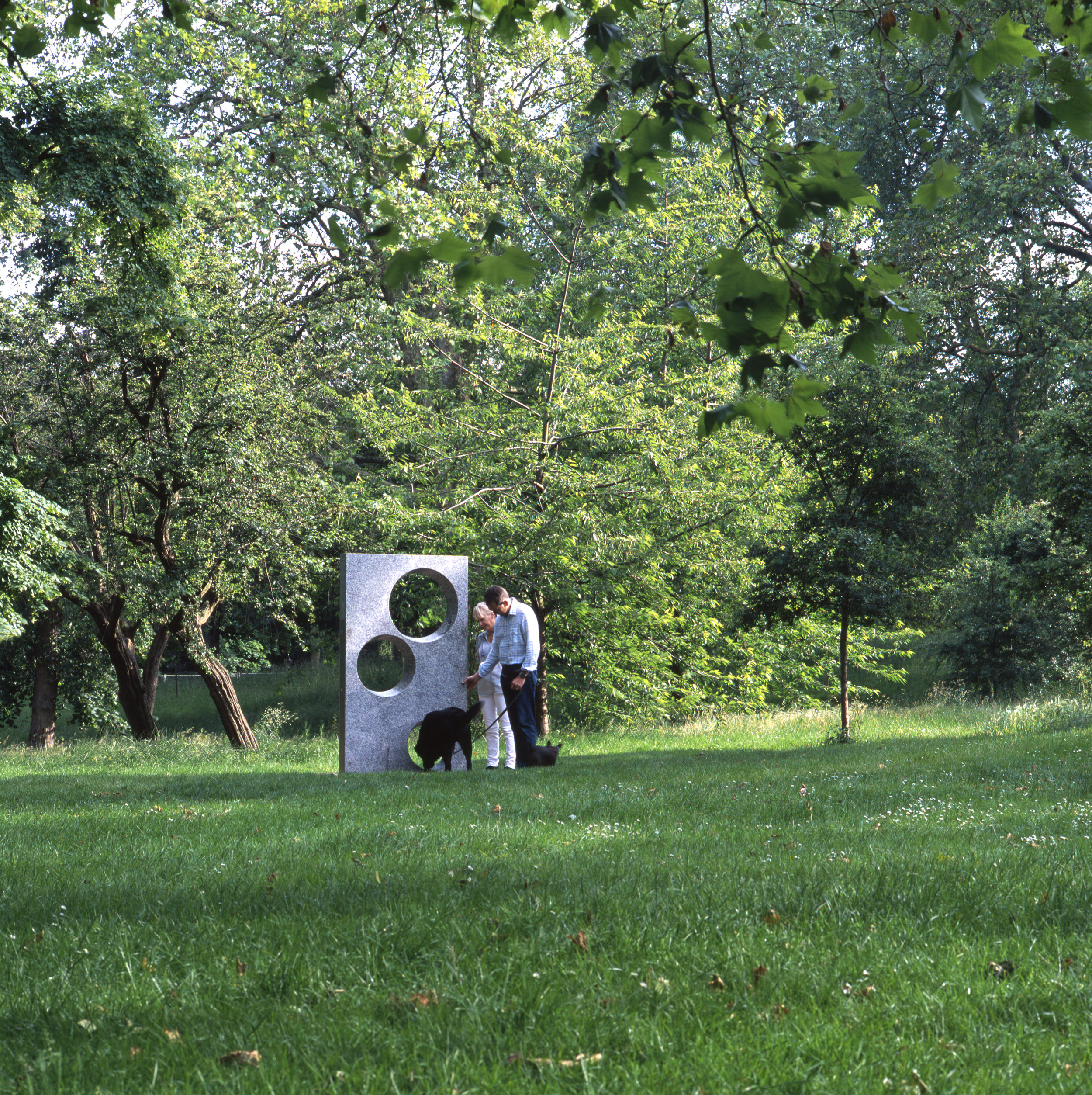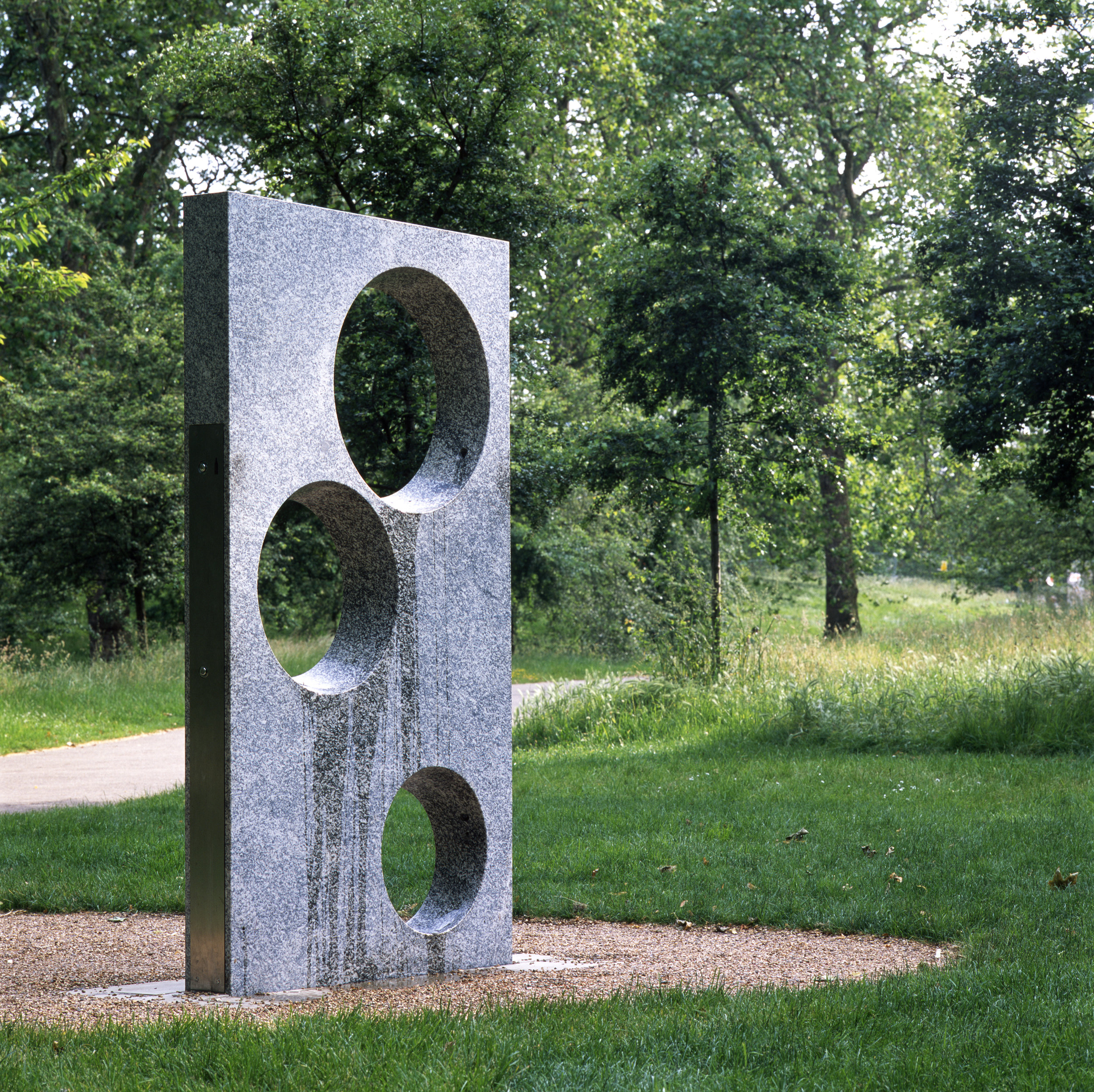Art Installation
Watering Hole
Context
The brief was to design a drinking fountain that could be rolled out over the eight Royal Parks. In collaboration with Robin Monotti, Mark Titman won the competition against another 150 submissions from 26 countries.
About
In 1975 Paul Bernard, scientist and leader of a French archaeological team, discovered in Ai Khanoum, Afghanistan, a unique sun dial dating back to the time of Alexander the Great. The sun dial took the form of a carved slab of limestone, an inclined slab with a cylinder hollowed out of its centre. It was this ancient Greek artifact that was the inspiration for our design for the new drinking fountain for the Royal Parks. We chose to research sun dials as the first stage of the design process, and when we discovered this unique item from Ai Khanoum, literally Lady Moon in Uzbek, we knew that we had stumbled onto something with great potential. We recalled the monolith in 2001 A Space Odyssey, especially the frame where the monolith, shot from below, is just eclipsing the Sun with the Moon at its zenith. We recalled the standing stones of the British Isles, especially the ones at Stenness in the Orkney Islands and the hole-in-the-stone at Men-an-Tol in Cornwall. The experience of connecting the drinker with Water, the Earth and the Skies was now possible.
From this stage it became a matter of addressing a series of questions and making the design work as a drinking fountain. We decided that three holes were better than one as they would cater for adults, children, wheelchair users and pets. We decided it should be made of granite like the standing stones in Cornwall. The chamfered holes will allow the experience of a sense of immersion while drinking, as the drinker’s face is framed for other viewers to see. These playful experiences are redolent of both the seaside face frames where photos are taken on holidays, and of the wishing wells in which one places one’s head.
Inspired by the view of the dome of St. Peter’s that can be seen through the Piranesi designed keyhole of the Priory of the Knights of Malta on the Aventine Hill in Rome, we became aware that the fountain had an urban dimension, as views of the city beyond could be framed by the circular holes. Memories of the positioning of the obelisks along the main street axes of Rome by Sixtus V also led to the realisation that we could suggest a complete urban project for the positioning of the fountains, which can also relate and fit in well with the Picturesque designs of many British parks.
“Watering Holes” is a much needed solution to the environmental problem of plastic bottle waste in the Royal Parks and beyond. As an experience of connecting with the elements and stopping for a moment, it also offers the individual a moment of intimacy, delight and reflection in the fast city. The next stages of work, for this project is a working prototype, and then the parks’ site specific projects will follow around London and possibly beyond
